A common question many car owners have is what options their car was ordered with. Can you look these up using your vehicle identification number (VIN)? How do I find out what options my car was ordered with?
You can find details about your vehicle’s factory options using your vehicle identification number (VIN). Contact the service department of your car manufacturer’s dealership. Provide them with your VIN and ask for all options your car was ordered with.
Read on to learn more about finding out what options your car was ordered with, using a VIN.
How Do I Find Out What Options My Car Was Ordered With?
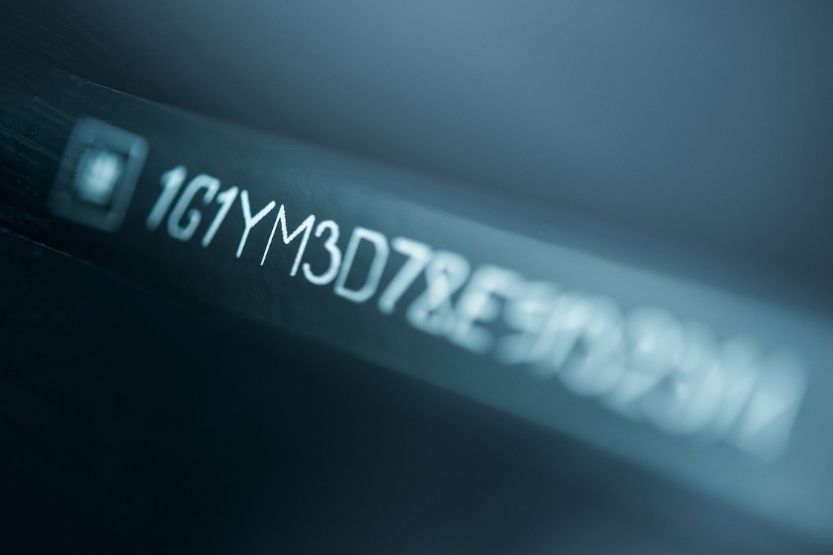
You can find the options your car was ordered with using your vehicle identification number (VIN). Contact the service department of your car manufacturer’s dealership. Give them your VIN and ask for all options information about your vehicle.
There’s a whole lot of information you can get using your car’s vehicle identification number (VIN). These include when your car was manufactured, the kind of vehicle, and where it was manufactured. You will also be able to know all options it came with after it left the factory.
So, if you’re wondering, “Can my VIN number tell me what options I have?” The answer is yes. In fact, you can access your vehicle’s VIN information in several ways. One is by seeking assistance from a car dealership. The other one is by decoding it yourself. Another way is by seeking assistance from businesses that offer VIN decoding services.
What Is a VIN?
A vehicle identification number (VIN) is also called a chassis number or a frame number. It is a unique code that includes each vehicle’s serial number.
The automotive industry uses the VIN to identify each vehicle and its distinct features if any. All types of vehicles have VINs, including motorcycles, towed vehicles, and motor vehicles. This is by ISO 3779 and ISO 4030.
It was in 1954 when VINs were first used in the United States. Between 1954 and 1981, vehicle manufacturers made use of their own VIN formats. This is because there was no standard VIN format during those years.
In 1981, however, the United States National Highway Traffic Safety Administration finally decided to standardize it. All on-road vehicles have been strictly required to contain their own and unique 17-character VIN. But it must not contain the letters O, I, and Q to avoid confusing them with the numerals 0, 1, and 9.
How to Find Your Car’s VIN?
You can find the VIN stamped on various parts of your vehicle. Try finding it on the dashboard or even inside the doorjamb. You will surely find the VIN stamped on them. It consists of 17 digits.
The VIN is also indicated on the documents you have about your vehicle. Typically, it is recorded in your vehicle’s registration and insurance documents.
How to Find Out What Options Your Car Was Ordered With Using the VIN

If you want to find out the factory options your car was ordered with; you may do so as long as you have your VIN.
You can choose from 4 methods of using a VIN to check the options of your vehicle. These include the following:
- Seeking Assistance from the Car Dealership or Manufacturer
- Buying a Vehicle History Report
- Decoding the VIN
- Accessing VIN Decoding Websites
1. Seeking Assistance from the Car Dealership or Manufacturer
A car dealership or the car manufacturer will be able to help you determine the options your car was ordered with. But before communicating with them, you must already have your car’s VIN with you. That’s the only way they can provide you the exact information that you need in terms of factory options.
You can find the VIN stamped on various parts of your car. Sometimes, it is etched on certain parts of your car. There are times when it is in the form of a sticker.
You can find the VIN somewhere on your dashboard. If you can’t find its exact location, try looking for it on the door jamb. It may also be etched on the metal within the engine compartment. In most cases, it is etched on car parts that you can’t remove easily.
The VIN may also be found on documents associated with your vehicle. These include the repair records, registration, and title. It is indicated in your vehicle’s insurance documents as well.
Once you already have the VIN, you may now contact the car dealership. Provide your VIN and ask for information on your car’s factory options.
If you can’t contact the dealership, you can call the customer service team of the carmaker. Similarly, provide your VIN and tell them what kind of information you want to get.
2. Buying a Vehicle History Report
There are third-party websites that have complete vehicle history reports which they sell to their customers. These comprehensive reports contain historical data on the vehicles’ make, model, sale, and even repair details.
To get your full vehicle history report, there is a fee that you need to pay for getting their services. Make sure to prepare your VIN because they will ask for that too. That way, they will be able to provide you with the correct vehicle history report.
Several businesses are offering this type of service. Check out their websites and determine those that offer good deals. The cost of a full vehicle history report typically ranges between $20 and $40.
You can probably check out several websites first before finally deciding which one to choose. It is best to look for promos. Some of them offer discounts if you request more than 2 vehicle history reports.
Once you get a hold of the report, check first if the VIN you provided matches with the VIN indicated in it. If they match, then that document contains the exact information that you need.
In the vehicle history report, you will get a good idea of your car’s options. The document will contain your vehicle’s repair and registration history. Some reports also include details of aftermarket upgrades.
3. Decoding the VIN
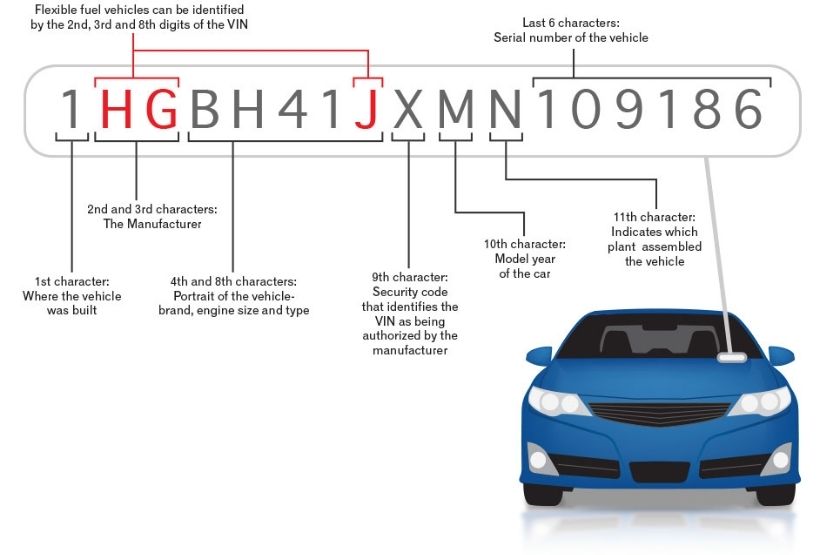
You can also decode the VIN on your own. The websites of vehicle manufacturers usually have resources that will assist you in decoding the VIN. They will guide you to interpret the meaning of each number.
Browse the car maker’s website until you find their VIN decoder facility. There, you will find instructions on how to decode the VIN.
Let me give you an idea too on how to interpret the VIN by briefly discussing the various VIN sequences:
First Sequence: First Three Characters of the VIN
Take hold of your VIN and look at the first 3 characters that form part of it. Those first 3 characters are the world manufacturer identifiers. They tell you information related to the type of vehicle that you have and where it was manufactured.
The first character that forms part of your VIN refers to the region the vehicle was manufactured. While the second character refers to the specific country, and the third character refers to the type of vehicle. To give you a clearer idea, the sequence basically looks like this:
North America – United States of America – Light Truck
Suffice it to say that numerous vehicle owners can have VINs with the same first 3 characters.
Second Sequence: Fourth to Eighth Character of the VIN
The second sequence starts from the 4th up to the 8th character of the VIN. This sequence tells more information on the factory options of your vehicle. Among the details include the following:
- Engine,
- Vehicle model, and
- Body style.
Third Sequence: Ninth and Tenth Characters of the VIN
The ninth character that forms part of your VIN does not tell any specific information about your car. Instead, it is the character that verifies the legitimacy of your VIN. It is also known as the “check digit.”
In case you suspect that your car has a fake VIN, immediately contact the manufacturer for verification. Also, if you want to decode this, you can seek assistance from a car dealership.
The tenth character of the VIN refers to the year model of your vehicle. This digit is important if you plan to know more about your car’s factory options. Vehicles with different year models have various option group packages.
This tenth character, however, does not tell you the year that your vehicle was manufactured. For instance, it is possible that a 2010 Chevrolet Silverado was built in 2009. This data type is also indicated in the Vehicle’s Owner Manual and other documents related to your car.
Fourth Sequence: Last Seven Characters of the VIN
If your main goal is to determine your vehicle’s factory options, this last VIN sequence is the one you are looking for. The last 7 characters of the VIN refer to information on vehicle options.
However, to be able to decode this, you need to seek assistance from the car manufacturer. In most cases, though, the websites of carmakers have a VIN decoder. In case you are having a hard time finding it, contact their customer service for further assistance.
The information you can get using this last VIN sequence includes the specific plant where the manufacturers built your car. It also includes other information that is specific to the production of your vehicle.
When you decode the last VIN sequence, it will reveal information specific to your vehicle. But it will also contain data similar to others. This is particularly true for vehicles from the same year model and make. Among the common options are the following:
- Equipment packages like off-road and towing
- Sunroof
- Seat covering material
- Entertainment system
- Power seats and windows
- Time color
4. Accessing VIN Decoding Websites
Earlier, I told you about accessing your car manufacturer’s website for their VIN decoding facility. In case it is not accessible, you can always look for third-party websites with VIN decoders.
To access VIN decoding websites, you will be asked to encode your VIN. Some websites provide free VIN reports. However, the details indicated in it are only limited. If you need more extensive data, this will most likely come with a fee.
Once you have successfully typed in your VIN, follow the instructions that will pop on the screen. These VIN decoding websites are, in most cases, user-friendly. You will surely get the data you need in a matter of minutes.
These websites are, in fact, efficient. They will provide you with sufficient data about your vehicle. In terms of factory options, among the details, you will get those about your vehicle’s trim, transmission, and emissions specifications.
If there were changes in the production process, this should also form part of the VIN report. However, if the previous owner made changes to the car after the initial sales, those details might not exist in the report anymore.
Conclusion – Find Factory Options with a VIN
You can find information on factory options by using your vehicle identification number (VIN). Contact the service department of your car manufacturer’s dealership. Give them your VIN and ask for all options information about your vehicle.
But there are also other ways of determining your vehicle’s factory options. You can decode it on your own using third-party websites. If not, you can also seek assistance from businesses that offer VIN decoding services.
Getting information on the options that your car was ordered with is not difficult. As long as you have your VIN ready, you can get it anytime you want to. Besides, in this day and age, it is easy to get any information that you need. Even if you’re home or just about anywhere, you can conveniently access any data you need.
Related reading:
5 Ways to Find Vehicle Owner by License Plate (Free)
License Plate Screw Size – What Size Screws Will Fit Your Vehicle?
License Plate Size – What Are the Standard Dimensions?

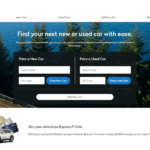

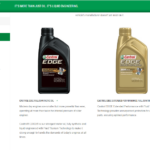




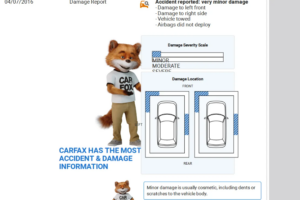
![Read more about the article How to Transfer a License Plate to a New Car [in 4 Steps]](https://roadsumo.com/wp-content/uploads/2022/02/transfer-license-plate-to-new-car-300x200.jpg)